For many gardeners, wood ash is a plentiful and free resource. If you burn wood, you surely have plenty of wood ash that needs somewhere to go. Even if you don’t burn ash to heat your home, you may have a friend or neighbor who might be happy to let you clear away their ash and put it to good use in your yard or garden.
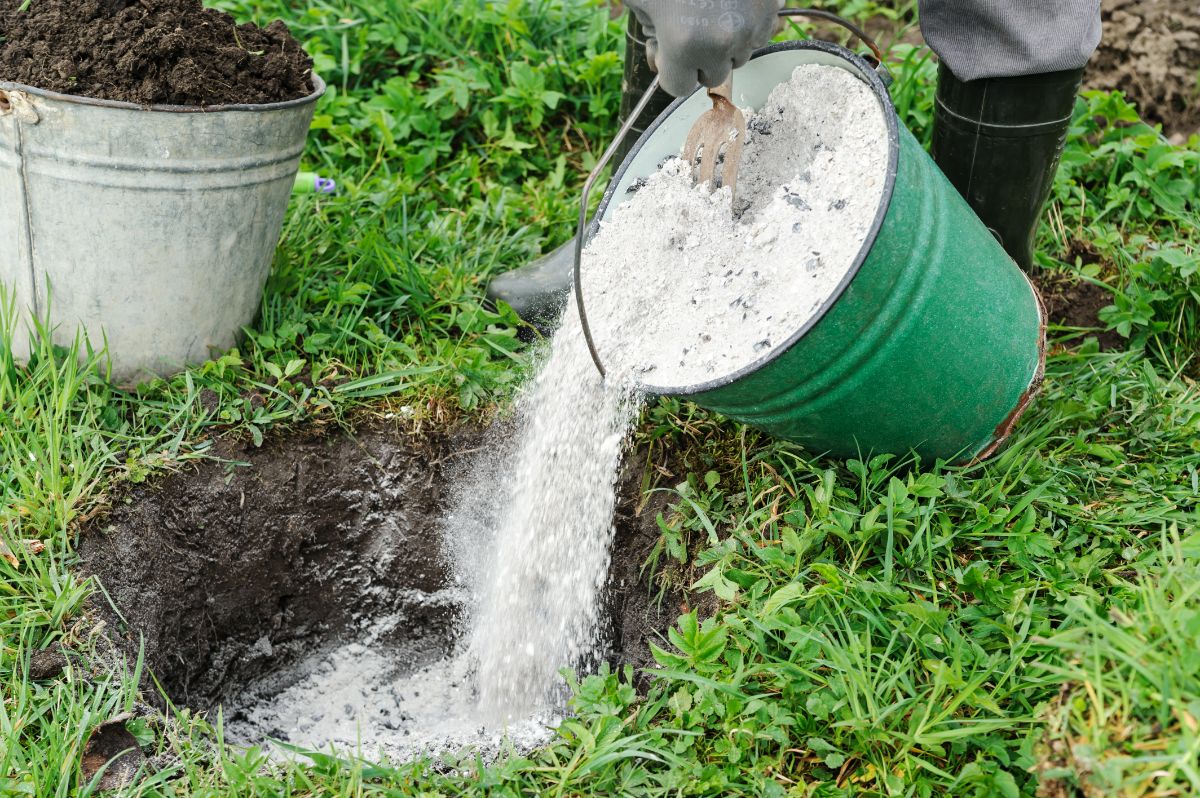
Jump to:
- Why Wood Ash?
- How To Use Wood Ash in the Garden or Landscape:
- When Should I Apply Wood Ash to my Garden?
- How Do I Apply Wood Ash to my Garden?
- How Much Wood Ash Should I Use in my Yard or Garden?
- Wood Ash Application Rate for Gardens and Flower Beds
- Wood Ash Application Rate for Grass and Lawns
- Some Notes on Wood Ash Application
- Plants That Benefit from Wood Ash Application
- Plants to Avoid or Limit the Use of Wood Ash
- Using Other Fertilizers with Wood Ash
- Using Wood Ash in Compost
- Sourcing Wood Ash for Gardens, Lawns, and Landscapes
- Addressing Concerns Regarding Heavy Metal in Wood Ash
- Storing Ash for Later Use in the Garden or Landscape
- Other Home and Garden Uses for Wood Ash
Why Wood Ash?
What does wood ash do for your garden?
Wood ash is a useful fertilizer and amendment that can be used in the garden, on lawns, and in landscapes, too. It is a good source of several important minerals and nutrients for your yard and garden. It is also a highly effective amendment for modifying soil pH.
The most abundant mineral nutrient in wood ash is calcium. On average, the calcium content of wood ash is 20% or higher. Calcium is an important element that helps plants stave off diseases such as the notorious blossom end rot.
Wood ash is also a very good source of potassium—it is about 5% potassium. It is commonly known or referred to as “potash” for this reason, and potassium is the mineral that wood ash is most often used for. When people look for a source of potassium, they look to potash—wood ashes.
Other minerals found in wood ash are magnesium, sulfur, and phosphorous, all found at concentrations around 2%. In addition, wood ash contains trace amounts of manganese, iron, zinc, aluminum, boron, copper, and other trace minerals.
Besides being a source of potash, wood ash is also commonly used as an amendment to adjust soil pH. The high calcium content in wood ash is in the form of calcium carbonate. Calcium carbonate is what is in agricultural lime. One of the major uses of lime in gardening and landscaping is in raising soil pH to reduce its acidity and make it more neutral or alkaline (depending on the goal and how much is used). This makes wood ash an excellent, free resource for amending acidic soils or soils with a low pH.
It should be noted that the content and concentration of wood ash varies depending on the source, which is why we see an estimated range in contents and their numbers. If you would like to know more exact amounts of these nutrients in your wood ash you can have it tested.
How To Use Wood Ash in the Garden or Landscape:
Wood ash is very easy to use for the lawn and garden. The key lies in knowing when to use it, how much to apply, and what it is and isn’t good for.
When Should I Apply Wood Ash to my Garden?
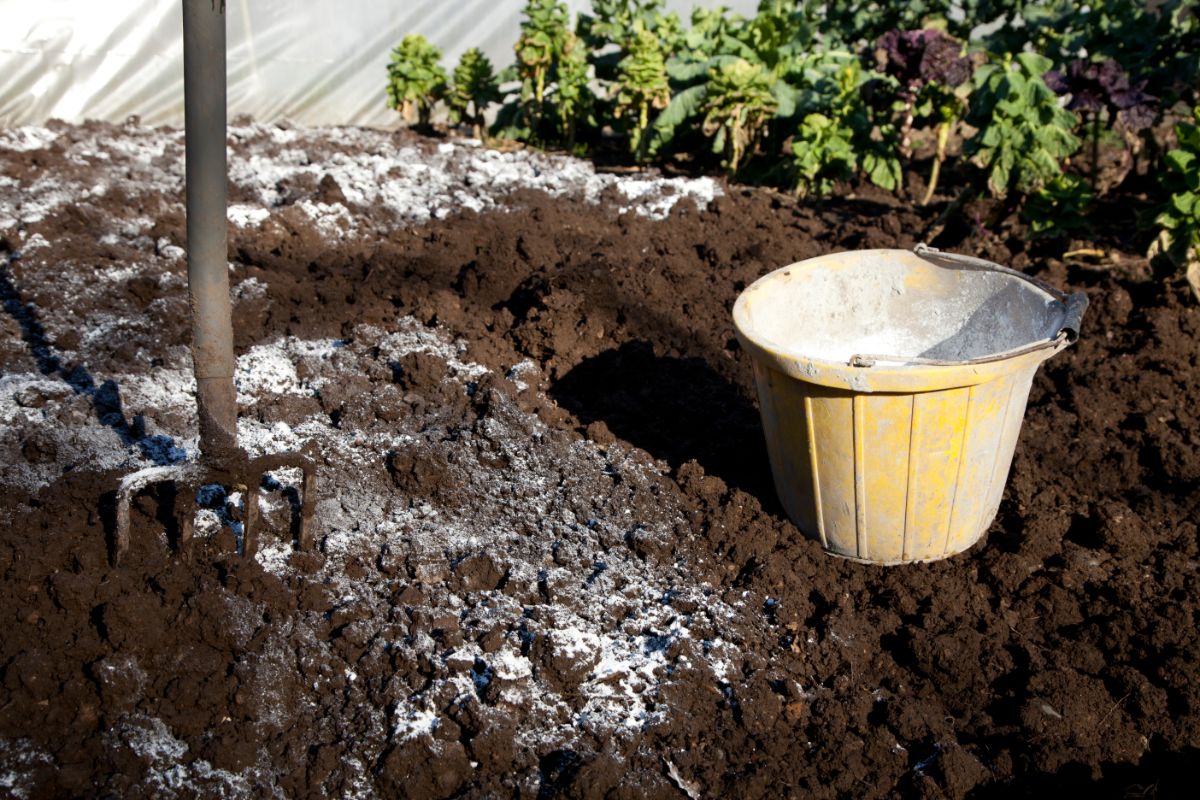
Wood ash is a good annual soil amendment and fertilizer as long as it is not used on the “wrong” plants. The best time of year to apply wood ash to your garden or yard is over the course of the winter or in the early spring.
Look to wood ash when you need to add potassium (potash), sweeten acidic soil, and/or increase levels of calcium or phosphorous.
Fortunately, wood ash works relatively fast and so it can be applied almost up to planting time (and in some instances, as a top dressing or side dressing). For best results, it is recommended to apply it at least a month before planting.
When used as an amendment to adjust soil pH, wood ash only needs about a month to work. It works much more quickly than lime, so if you have missed your window and need a quick fix for soil pH, wood ash is a better choice.
As a rule of thumb, it is not recommended that you apply wood ash to soils that have a pH level of 6.5 to 7 or higher because it will make the soil too alkaline; however, that depends on how high a pH you are trying to achieve. If a more alkaline soil is the goal, wood ash will still be an option.
Ash can be used in place of lime for lawns as well. You will need to adjust the application rate to achieve the desired results (see the section on application rates below).
How Do I Apply Wood Ash to my Garden?
“Safety first” applies to using wood ash just as it would for any other type of fertilizer or amendment.
The first rule is to make sure that the ash you are spreading is well cooled and is no longer burning. Be aware that when ash is piled or bucketed when still hot the inner layers can hold heat and smolder for quite some time—days even. Avoid handling or spreading hot ash. Take care not to burn yourself and be especially careful if you live in a dry or fire-prone area.
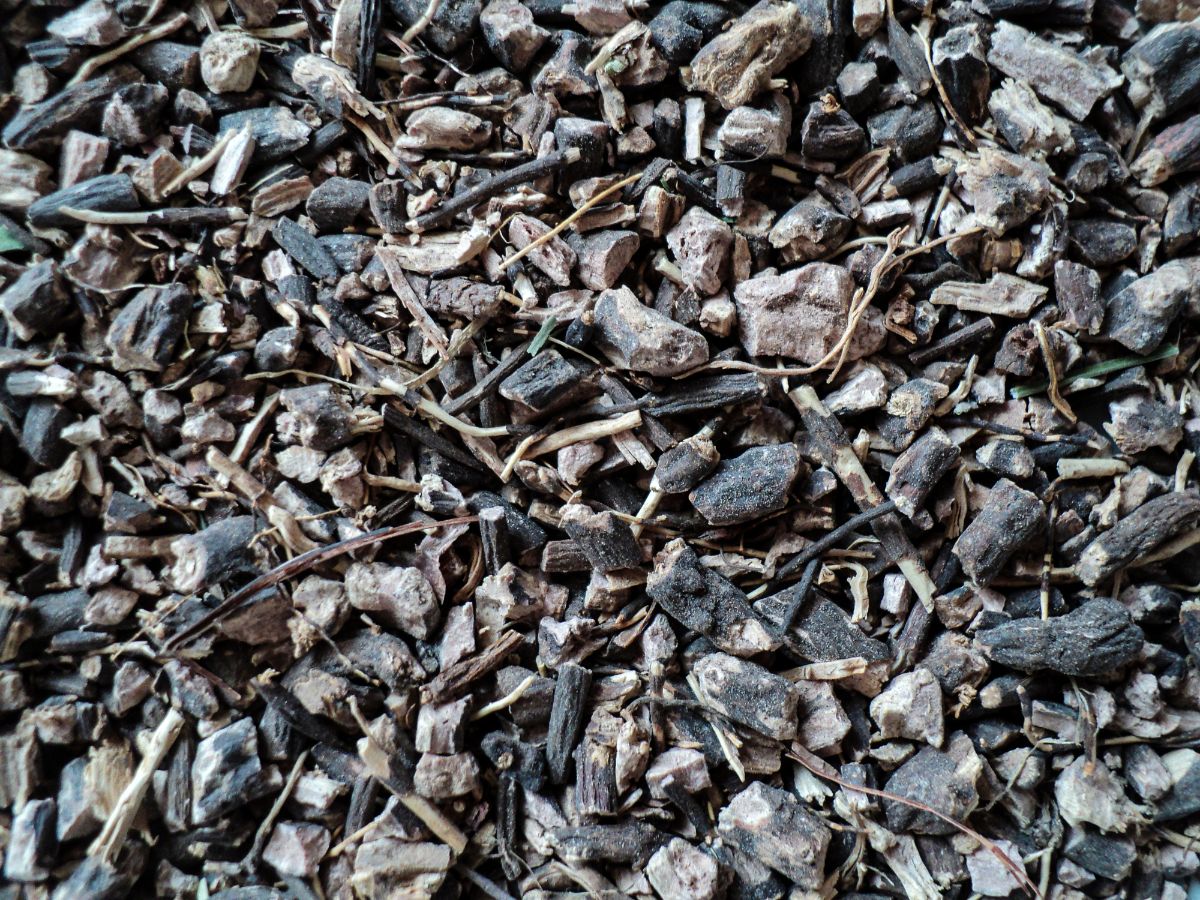
If the ash you are using has large coals or chunks of unburned wood in it, sift the large pieces out before you spread it on your lawn or garden. This can be done by simply pouring the cool ash through a screen of one-quarter or one-half inch hardware cloth.
Wood ash is obviously quite light and can be irritating to the eyes, nose, respiratory tract, and to bare skin.
It is wise to wear safety glasses or goggles, long sleeves and long pants, gloves, and a mask or covering for the nose and mouth when you are applying wood ash. Avoid breathing in ash and do not spread ash on a windy day (not only is this less safe, but you may end up wasting this valuable amendment and fertilizer if it blows away).
Spread wood ash evenly and do not leave large clumps or piles which can result in too many salts concentrating in one area. Up to a half inch of ash is fine. Note that as an amendment to help improve soil tilth, heavy clay soils can take more ash than sandy soils can.
It is best to apply wood ash onto moist soil so that it stays where it is needed. If that is not possible, you may want to sprinkle or water the area after application. If spreading on loose soil, work the ash in as soon as possible to maximize its benefits.
How Much Wood Ash Should I Use in my Yard or Garden?
The application rate for wood ash will vary slightly depending on where you are using it and for what purpose.
Wood Ash Application Rate for Gardens and Flower Beds

In the garden, the application rate for wood ash is between 15 and 20 pounds per 1,000 square feet. This is roughly equal to the amount of ash that you will get from burning one cord of wood.
A five-gallon bucket holds about 20 pounds of wood ash. So, to make it easy, use one five-gallon bucket of clean wood ash for every 1,000 square feet of ground.
If you are applying ash as a top-dressing fertilizer or amendment around individual bushes, spread one-half to one pound evenly around the base of the bush.
For individual plants, sprinkle no more than one-half inch thick around the root area at the base of the plant.
For larger trees and fruit trees, apply to the area of the base of the tree to a thickness of one inch deep.
Wood Ash Application Rate for Grass and Lawns

When applying to lawns, the wood ash application rate is a little lower. In that case, apply wood ash at a rate of 10 to 15 pounds per 1,000 square feet.
As mentioned previously, wood ash can be used in place of lime on gardens or lawns to increase the pH. If you have a good wood ash supply, you may want to switch that out and use ash in place of your annual liming. Note that wood ash has about half the concentration of calcium carbonate that lime has; so, as a replacement for lime, use twice as much wood ash as you would lime. Four cups (or one quart) is equal to about one pound of lime.
One of the benefits of using wood ash instead of lime is that it acts faster and affects a change more quickly than lime can. You should see results from wood ash within in a month. If you are soil testing, wait 30 days to test a second time to see if the desired results have been achieved. If not, you may apply wood ash a second time.
It is not advisable to use more than the recommended amount because overuse of wood ash can lead to pH problems in the soil.
Some Notes on Wood Ash Application
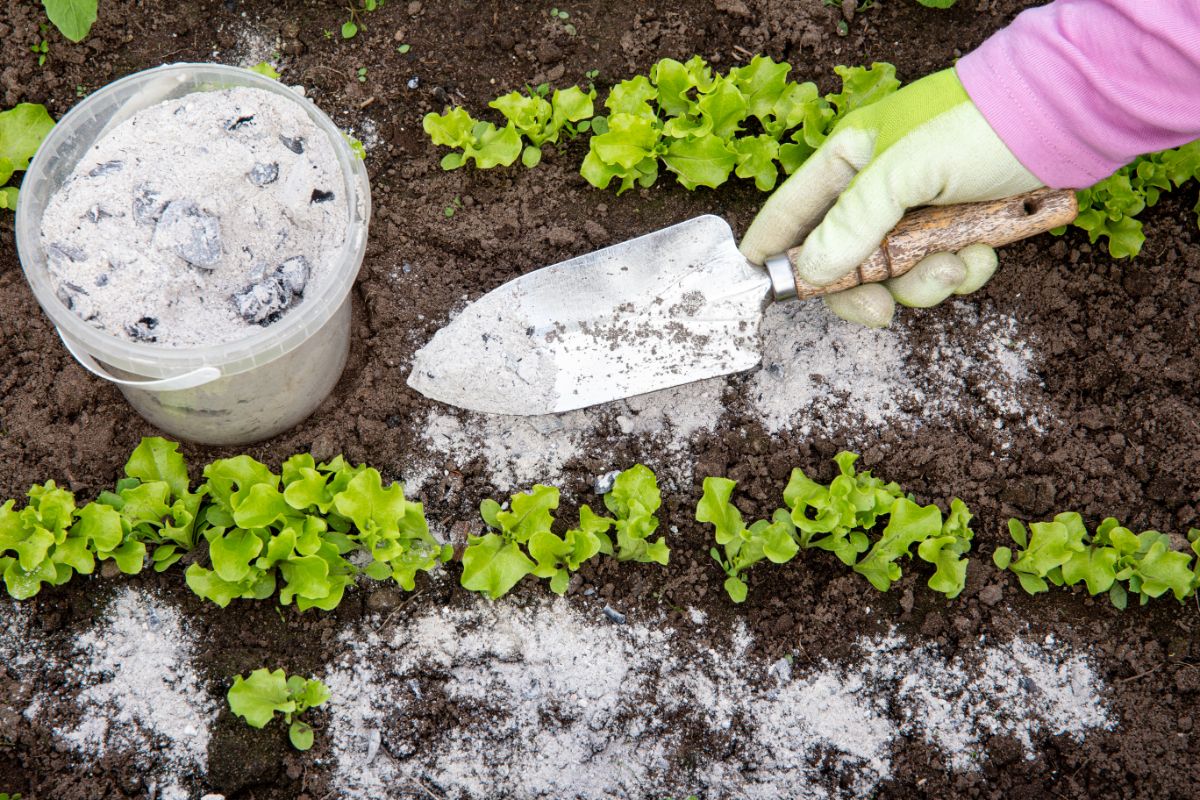
Wood ash should be used judiciously. It is possible to overdo it with wood ash. A soil test—whether an at-home soil test or a test performed by a lab—is a good idea. Perform your test before applying wood ash so you know what nutrients your yard or garden may need and/or so you know if the soil pH needs to be raised. Calcium, phosphorous, pH, and other nutrients will be your main targets.
This is especially smart for vegetable plots because most vegetables want their soil to be a little on the acidic side (in the range of 6.0 to 7.0). Depending on the natural acidity of your soil, you may need to reduce or suspend the amount of ash you apply so that you don’t change the pH too much (i.e., so that it is not made too alkaline for good plant performance).
Know the wants and needs of the plants you are growing. Not all plants have the same requirements, so you may need to use your wood ash selectively—apply the ash to some parts of the garden but not to others where the ash may pose a problem for the planned crop (see below for a list of plants to avoid using ash on).
More is not necessarily better if the amendment is not needed. Too much ash can cause “nutrient toxicity”. It might also cause the soil pH to be too high. Nutrient toxicity can result in plant deficiencies and imbalances. Imbalanced soil or soil with a pH level that is drastically off can make important minerals and nutrients inaccessible to plants, even if those minerals are abundant in the soil.
Overuse of ash and high soil pH can cause scab on potatoes, so, like lime, wood ash use should often be avoided where potatoes will be planted.
Chlorosis is another plant disease that can result from overuse of ash in the garden. It is characterized by a yellowing of the leaves which results from an interference with photosynthesis.
Plants That Benefit from Wood Ash Application
Ash is beneficial for many plants and bushes, but some are particularly partial to it. These include:
- Asparagus
- Tomatoes
- Brassicas including cauliflower, broccoli, and Brussels sprouts
- Conifers
- Juniper
- Grass
Plants to Avoid or Limit the Use of Wood Ash
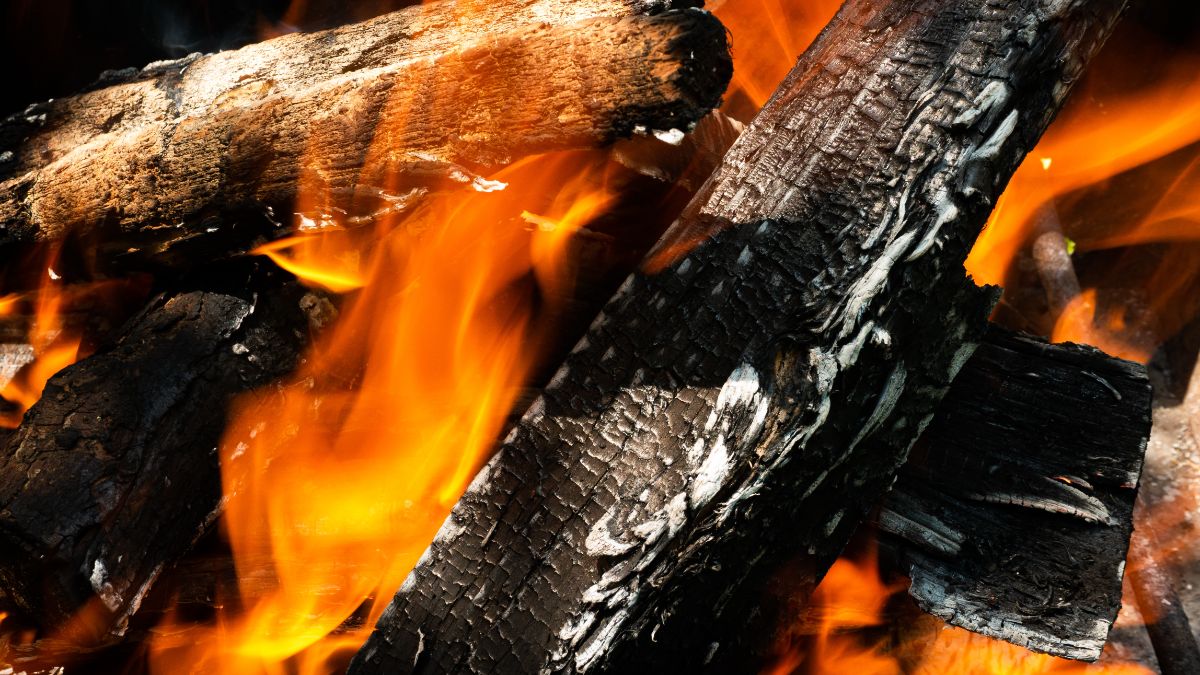
Ash is not recommended for use on all plants. These are usually the plants, trees, and shrubs that prefer more acidic soil and a lower pH. Avoid using wood ash on:
- Blueberries
- Azalea
- Rhododendron
- Potatoes
- Holly
Using Other Fertilizers with Wood Ash
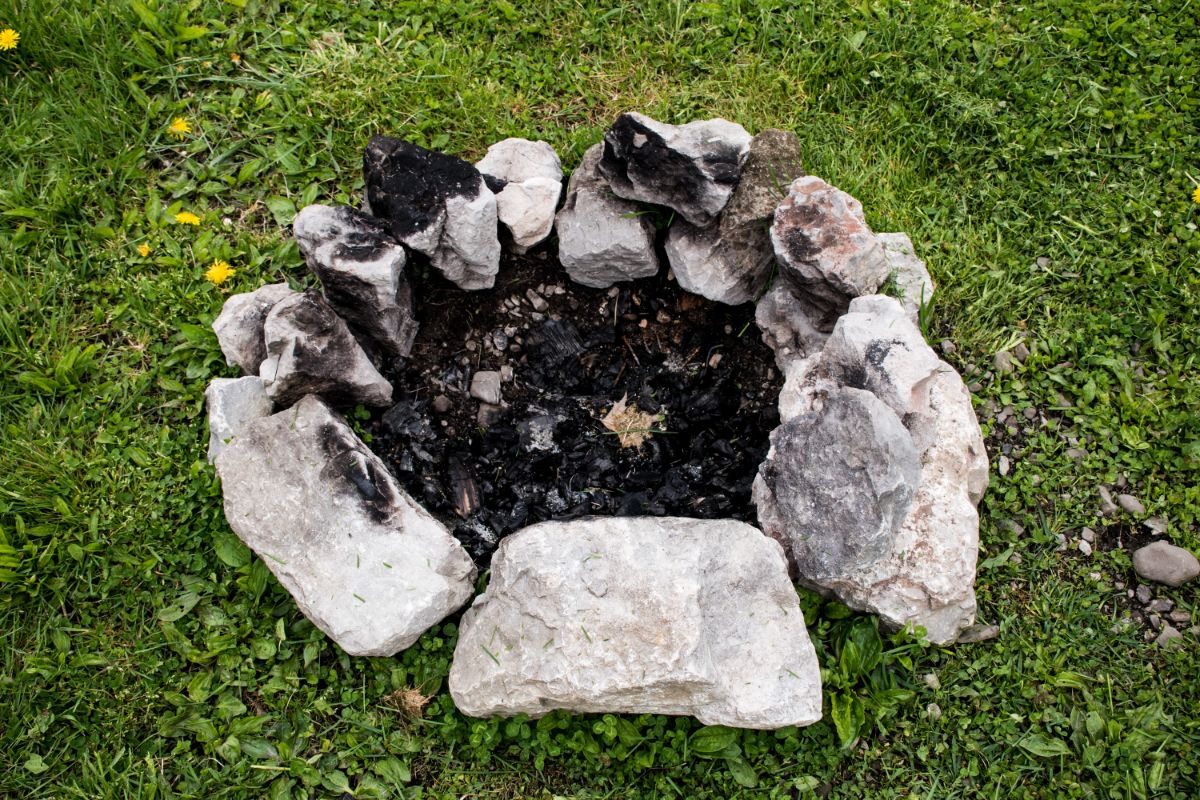
After applying wood ash, you should wait one month before applying other types of fertilizers. By this time the effects of the ash will be known. You may or may not need to apply other fertilizers once the ash has acted and it is quite likely that you will not need to apply all the fertilizers that you normally would.
When using wood ash as a fertilizer, nutrients such as phosphorous should be covered. If you do need to apply another fertilizer, nitrogen is what your soil is most likely to need.
Using Wood Ash in Compost
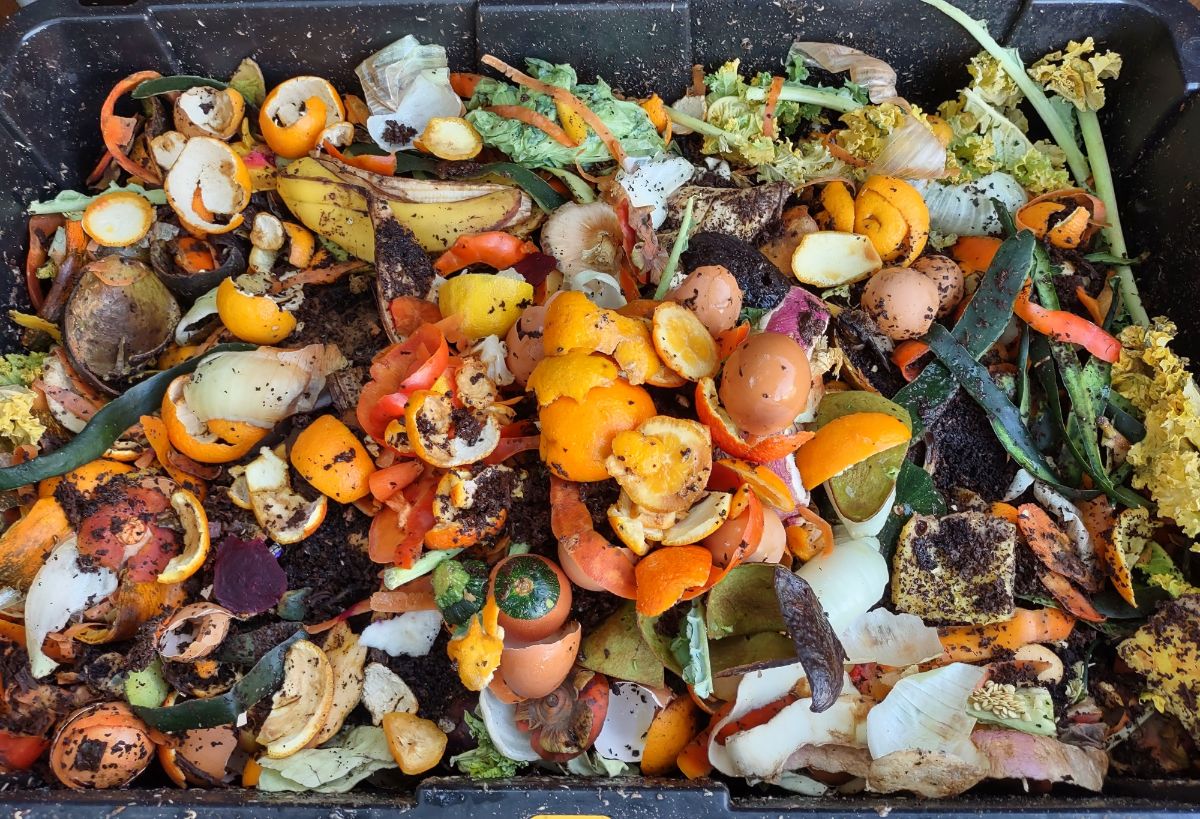
Wood ash is a great addition to the compost pile. If you are not using your ash directly on your lawn or garden, use any remaining ash in your compost heap.
Just like when it is applied to soil, wood ash helps to control the acidity levels in your compost pile, too, and helps to keep the resulting compost at a near neutral level; quality, neutral compost is more widely useful as it will not affect the acidity levels for different plants. Ash also (to a lesser degree) helps with texture and tilth and may help mitigate strong odors in your compost pile.
Spread wood ash evenly over the layers of material in your compost pile. A good rate is a layer of ash applied to every six-inch layer of material. Apply a light layer between one-quarter and one-half inch thick.
Sourcing Wood Ash for Gardens, Lawns, and Landscapes
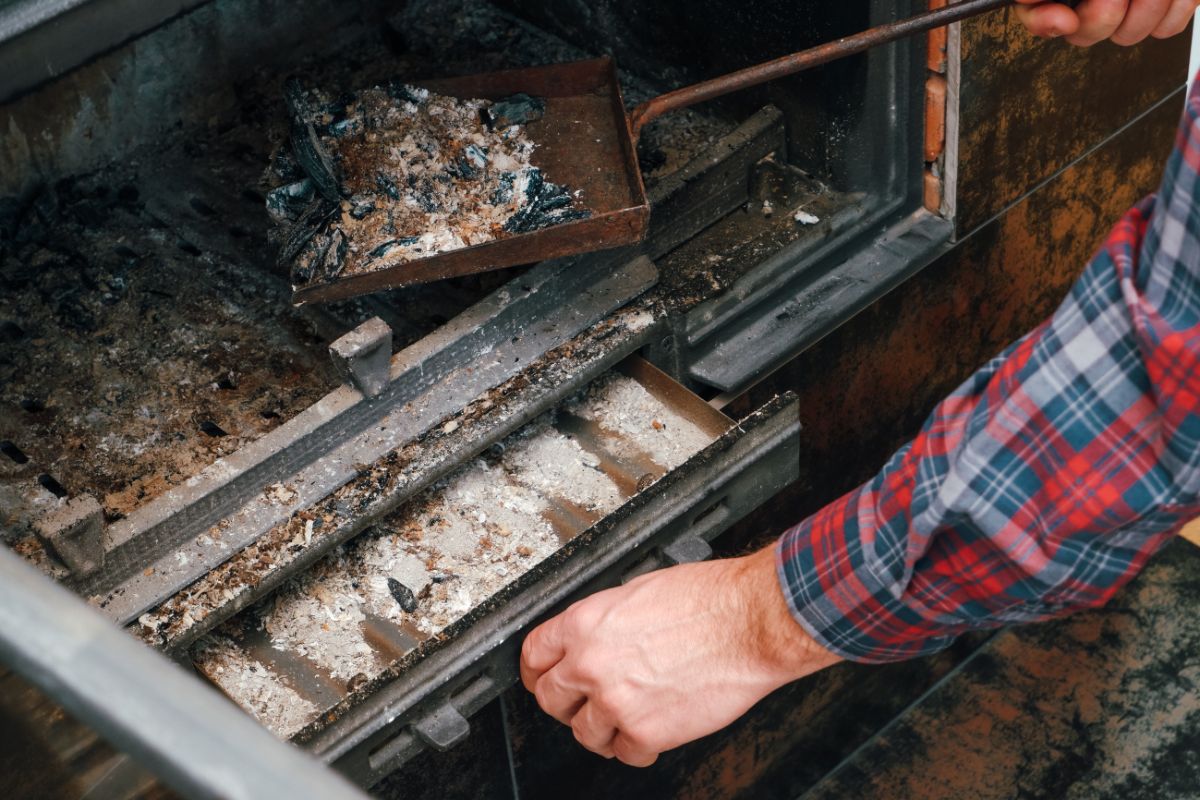
If you burn wood as a home heat source, you are in luck and have at least one source of wood ash for your garden. There are other places you can look for ash to use in gardening and landscaping, though. Here are some top sources:
- Wood-burning home heat: fireplaces, wood stoves, wood-burning furnaces
- Wood pellet stove or pellet furnace ash (pellets made for these heat sources are made of naturally molded wood particles or sawdust and therefore are safe to use as garden ash)
- Clean outdoor fires and fire pits
- Ash piles from burning (clean) yard waste like brush
- Burned garden stems, stalks, dead plants, and detritus
Don’t think only of your own personal wood-burning sources—think of those of your neighbors as well. If friends or neighbors will not be using their ash waste themselves, they’ll probably be more than happy to let you take it off their hands. Ash from hardwood sources like maple, beech, and oak is more nutrient-dense than that of softwoods like pine and fir, but all are good sources and are useful in the garden.
Addressing Concerns Regarding Heavy Metal in Wood Ash
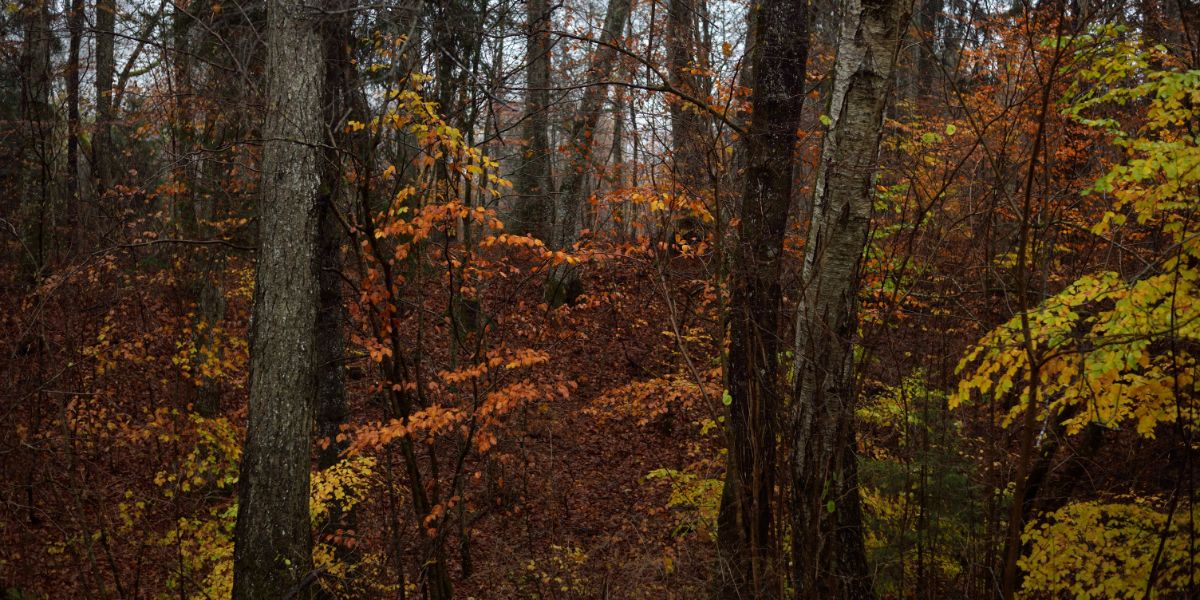
There are instances where wood ash can sometimes contain heavy metals. According to the University of Wisconsin https://hort.extension.wisc.edu/articles/using-wood-ash-in-the-home-garden/ this is an occasional issue which can be further reduced by proper application and by informed selection of the types and sources of wood and ash being used for food production. Also, the rise in soil pH that results from applying wood ash means that plants do not uptake heavy metals from the soil very readily (whether those metals already existed in the soil or are the result of ash content). The risk to plants and their consumers (whether animal or human) is therefore low. To minimize the risk of heavy metals from ash use:
- Apply wood ash at recommended rates. This keeps the concentration of any metals that might be present at low acceptable levels.
- Maintain good soil health and balance.
- Test the ash before applying it to your yard or garden if you are concerned that there might be an increased level of heavy metals.
- ONLY use CLEAN wood ash from natural wood sources.
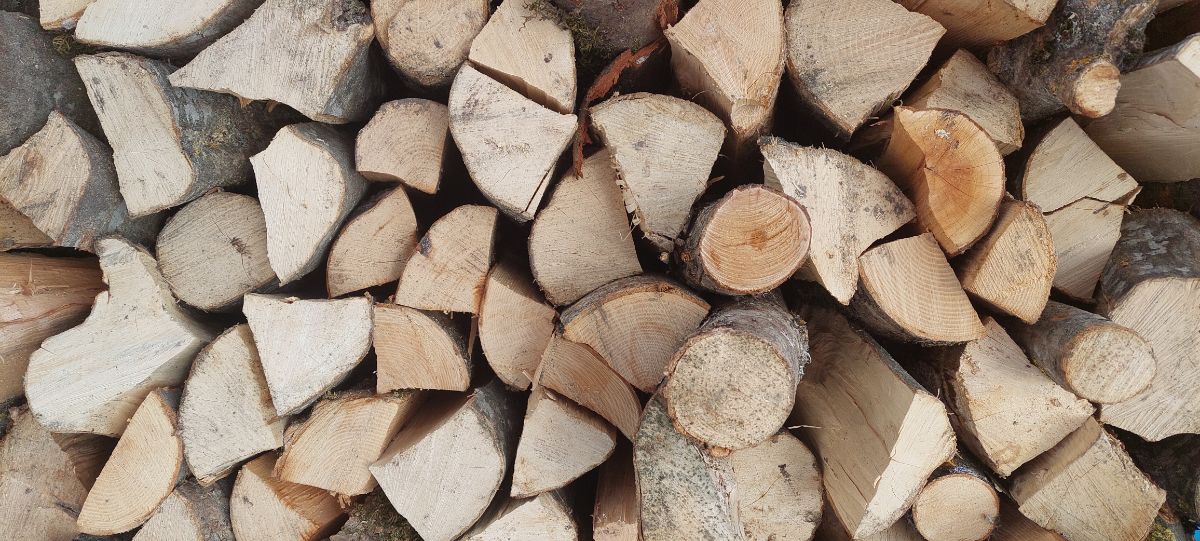
What constitutes a clean, natural wood source? It’s simple. Avoid wood and ash from:
- Trees grown in industrial areas
- Trees grown in known contamination sites such as sites with high levels of heavy metals, toxins, or chemicals
- Treated wood such as pressure-treated woods used for construction
- Wood that has been sealed, stained, or painted
- Wood burned with contaminants like plastic, garbage, or waste oil, et cetera
Storing Ash for Later Use in the Garden or Landscape
If you are not using your ash right away it should be kept dry and out of the weather (for example, if you are storing ash to apply to the garden later and are not spreading it right away or using it immediately in the compost heap). Beneficial salts and nutrients will leach out of the ash with rain, melt, and water.
To preserve the integrity of your wood ash, it is best to store it in a metal container with a cover (making sure that it is cooled and no longer burning, of course!).
A galvanized metal garbage can works well.
Other Home and Garden Uses for Wood Ash
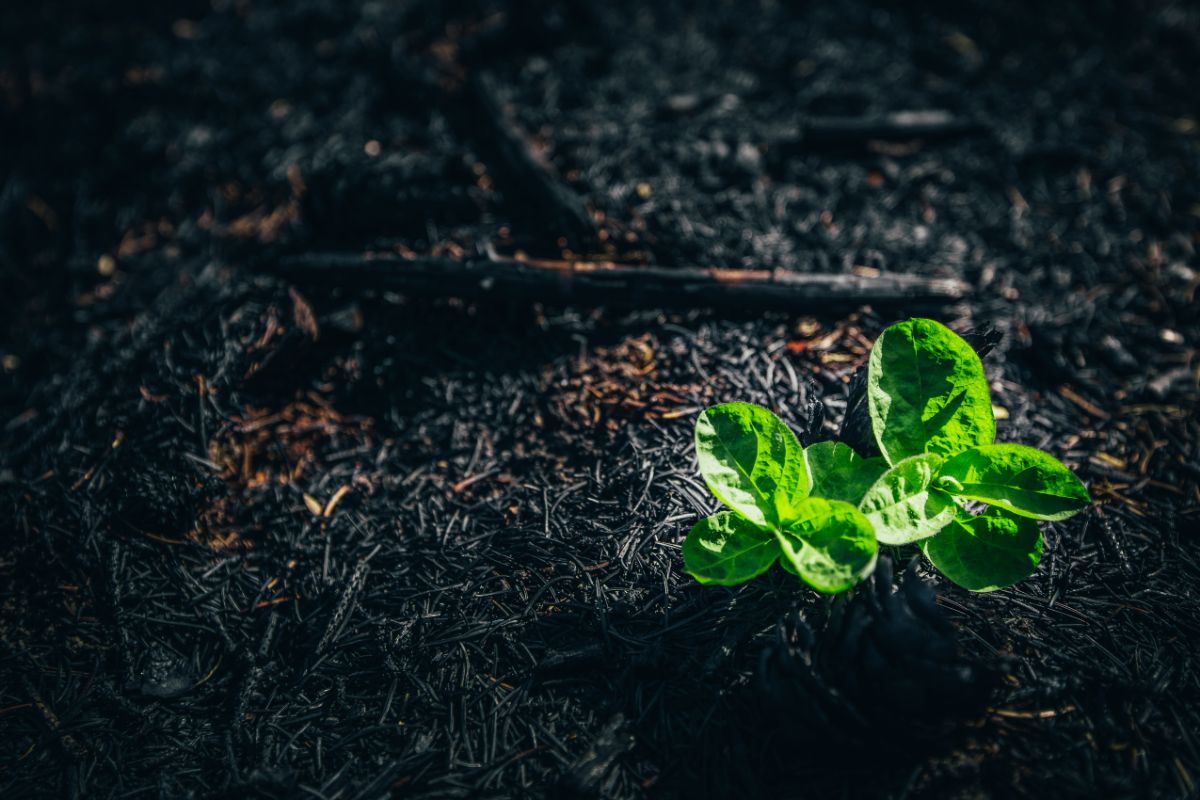
If you have an excess of wood ash from your heating and burning, there are still more useful ways to use that wood ash, rather than waste it. Use extra wood ash to:
- Make a fertilizer tea for plants. Put three pounds of ash in 30 gallons of water. Let it steep for four or five days, then strain out the ash (you can tie the ash in an old pillowcase or burlap to make removal easy). Use to water plants and bushes.
- Cover stains on concrete, pavers, stones, and walkways. Rub ash into stained areas, let sit, then sweep or rinse clean.
- Use to deter slugs and snails. Sprinkle a ring of dry ash around target plants. Reapply after water or rain as ash will only repel slugs and snails when it is dry. Take care not to apply too much or too often so that the plant does not get too much of a good thing (ash).
- Repel ants by sprinkling their ant hills with cool wood ash.
- Use as an ice melt and for traction on icy walkways. The salts in the ash will melt into the ice and help break it up. Ash also works well in place of sand on icy drives and walkways. Ash is safe for pets and any bordering grass or plants, too.
- Naturally absorb foul odors on pets like skunk spray by powdering your pet’s fur (avoiding the eyes), letting it sit, and then washing clean.
- Prevent algae buildup in ponds and water features by lightly sprinkling the surface of the water with wood ash. The potassium will help control algae growth.
- Make a paste of ash and water and use it as a mildly abrasive scrub to remove soot.
- Place ash in a container in an inconspicuous area to absorb foul or musty odors. In this way it works much like baking soda or charcoal.
- Use as a moisture absorber to pull excess humidity out of the air.
As you can see, ash is a lot more than waste. This heating byproduct is an excellent resource for the garden, and for the home, yard, and landscape, too.
Research and resources for additional reading:
https://extension.unh.edu/sites/default/files/migrated_unmanaged_files/Resource004042_Rep5718.pdf
https://pss.uvm.edu/ppp/articles/woodash.html
https://www.almanac.com/video/how-use-wood-ash-vegetable-garden#
https://site.extension.uga.edu/fannin-gilmer/2020/12/using-wood-ash-in-the-garden/
https://extension.umaine.edu/publications/2279e/#
https://www.gardeningknowhow.com/garden-how-to/soil-fertilizers/using-wood-ashes.htm

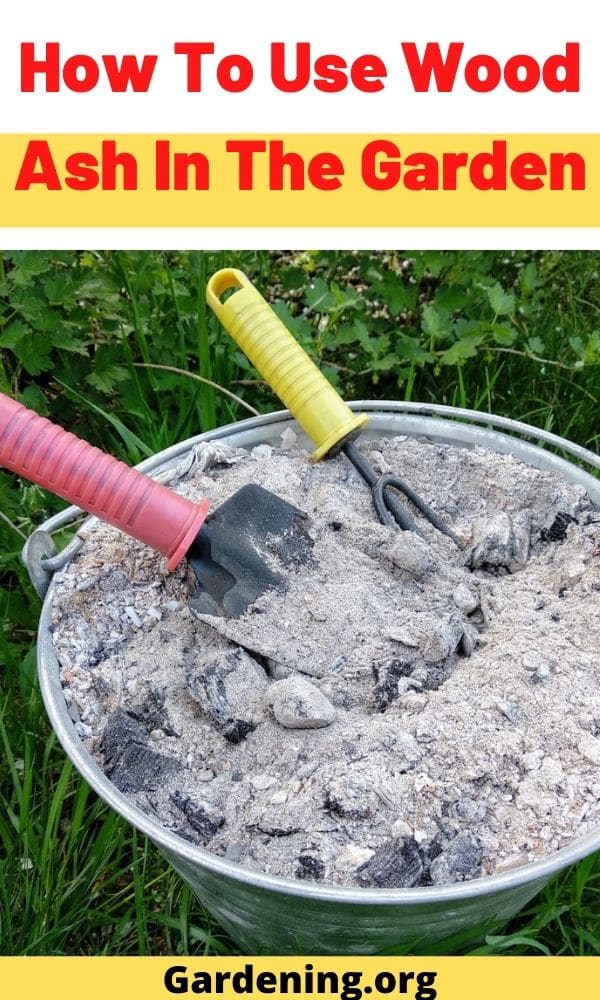

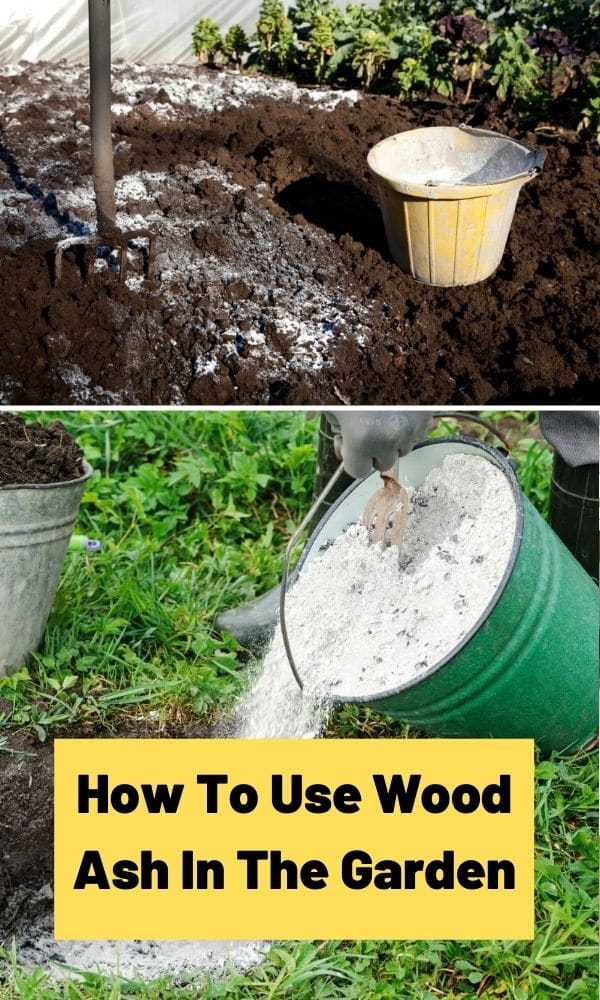

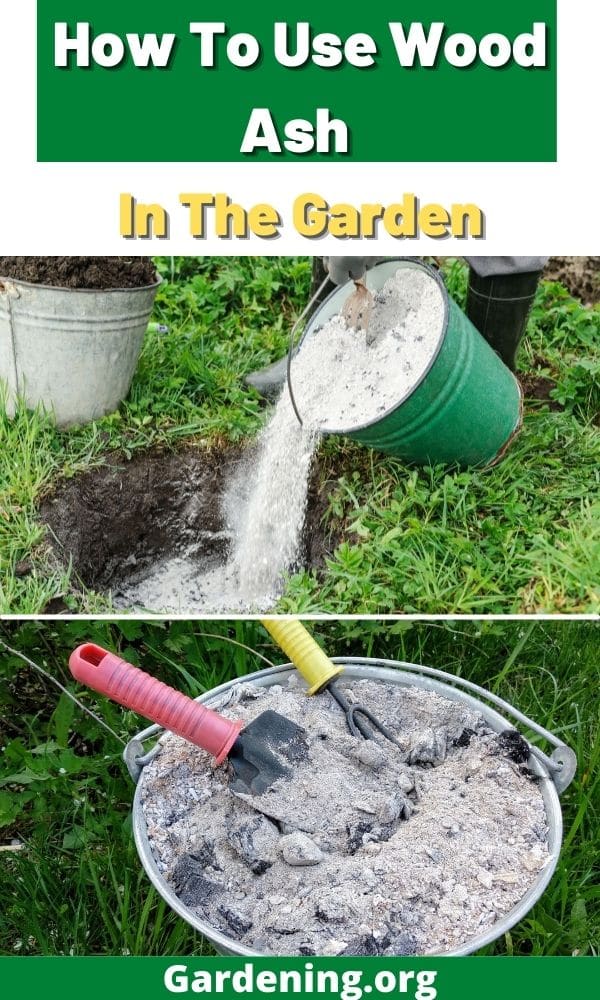
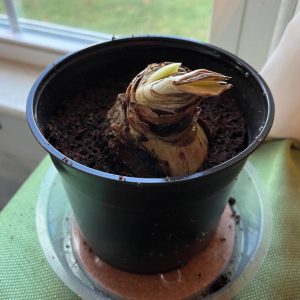



Elizabeth Eaton
Jeez, I'm really impressed with the writer's knowledge on this subject. I've never had a chance to do much gardening, but I now know exactly where to go for advice and help should that change. Thanks gardening.org!
shirley
Would love to print the article, but there no way to do that. It's difficult read on line with all the annoying ads and drop downs.!
[email protected]
I just set the buttons up on top to show a printer button that allows you to print the article with no ads.
Dinky Huna
Hi . I have just put ashes black ashes and throw it around my flowers and succulents .is it ok . Plse advise
Mary Ward
It should be fine as long as it is not a thick layer. If it is, you might want to rake them into the soil a little bit so they don't shed water and moisture can get into the ground.